Trapped by scientists: antimatter, cholesterol and red blood cells Understand article
Science in School is published by EIROforum, a collaboration between eight of Europe’s largest inter-governmental scientific research organisations. This article reviews some of the latest news from the EIROforum members (EIROs).

EIROforum
EIROforum combines the resources, facilities and expertise of its member organisations to support European science in reaching its full potential. To learn more, see: www.eiroforum.org
CERN: antimatter in the trap
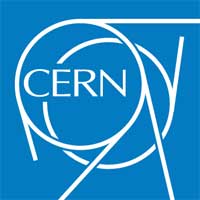
Precision studies of antimatter – the elusive counterpart of matter – should help scientists to find out why all antimatter produced in the Big Bang has disappeared. The most promising new ‘anti-object’ is antihydrogen, the simplest element in a hypothetical anti-world.
The first nine antimatter atoms ever were produced at CERN in 1995, but they moved almost with the speed of light – too fast for precision studies. The next breakthrough came in 2002, when the ATHENA experiment showed how to make millions of slow-moving antihydrogen atoms. But it has taken another nine years for the next step – trapping a few of them. Now researchers from the ALPHA experiment at CERN have succeeded in trapping 38 anti-atoms for 172 milliseconds. In July 2011, they announced that they had managed to keep a few hundred of them for as long as 15 minutes. This paves the way for a precision comparison of the energy levels between hydrogen and antihydrogen, using ultra-precise laser systems.
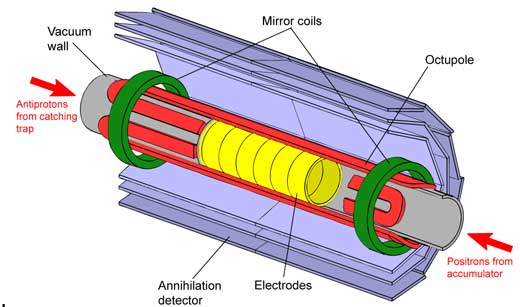
Image courtesy of CERN
To learn more, see the research publication:
The ALPHA Collaboration (2011) Confinement of antihydrogen for 1000 seconds. Nature Physics 7: 558-564. doi: 10.1038/nphys2025
Based in Geneva, Switzerland, CERN is the world’s largest particle physics laboratory. To learn more, see: www.cern.ch
EFDA-JET: JET fired up again

After the installation of 4500 new tiles on its inside walls and 22 months since its last run, the EFDA-JET fusion device re-started experiments at the end of August 2011.
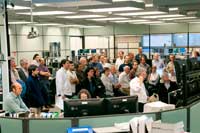
first new plasma developed
Image courtesy of EFDA-JET
A crowded JET control room with an expectant air of excitement witnessed a spectacular, 1 mega-ampere plasma as it developed and lasted for 15 seconds. This was a remarkable achievement as typically, the first plasma after an engineering shutdown appears only as a brief flash of light lasting less than a second.
Imminent experiments will further the understanding of how the next international fusion device, ITER, will behave, as the new JET wall tiles are identical to those proposed for ITER. Such an impressive start at JET will only heighten the optimism around the project – as it continues to blaze a trail towards commercial fusion power.
Situated in Culham, UK, JET is Europe’s fusion device. Scientific exploitation of JET is undertaken through the European Fusion Development Agreement (EFDA). To learn more, see: www.jet.efda.org
EMBL: Making red blood cells green

Scientists at the European Molecular Biology Laboratory (EMBL) in Monterotondo, Italy, have devised a new labelling technique which enables researchers to pinpoint for the first time those stem cells in the bone marrow that give rise to red blood cells.
The bone marrow of mammals such as humans or mice contains several different groups of stem cells, which differentiate into the different types of blood cell.
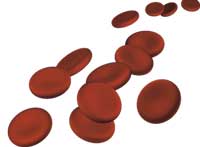
André-Pierre Olivier
With the new technique, cells in a mouse’s bone marrow turn fluorescent green only when they commit to becoming red blood cells. This is possible thanks to a fluorescent tag that attaches itself to the RNA product of a gene that only this lineage of blood cells expresses. The new technique, which other labs have already started to use, will help scientists to understand which groups of stem cells give rise to red blood cells, and to probe the molecular mechanisms involved.
To learn more, see the research publication:
Rasmussen KD, O’Carroll D (2011) The miR-144/451eGFP allele, a novel tool for resolving the erythroid potential of hematopoietic precursors. Blood 118(11): 2988-2992. doi: 10.1182/blood-2011-04-350728
EMBL is Europe’s leading laboratory for basic research in molecular biology, with its headquarters in Heidelberg, Germany. To learn more, see: www.embl.org
ESA: Herschel paints new story of galaxy evolution

The rate of star formation peaked in the early Universe, about 10 billion years ago. Back then, some galaxies were forming stars ten or even a hundred times more frequently than our galaxy does today. Such high birth rates are very rare in the nearby, present-day Universe, and always seem to be triggered by galaxies colliding with each other. So astronomers assumed that this had been true throughout history.
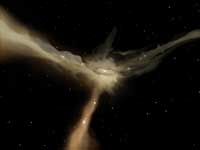
formation
Image courtesy of ESA-AOES
Medialab
Using the European Space Agency (ESA)’s Herschel infrared space observatory, however, astronomers have recently looked at galaxies that are very far away, and have thus seen them as they were billions of years ago. This peek into the past revealed that galaxies do not need to collide with each other to drive vigorous star birth. The finding overturns this long-held assumption and paints a clearer picture of how stars form – and galaxies evolve.
For more information, see the research publication:
Elbaz D et al. (2011) GOODS–Herschel: an infrared main sequence for star-forming galaxies. Astronomy & Astrophysics 533: A119. doi: 10.1051/0004-6361/201117239
ESA is Europe’s gateway to space, with its headquarters in Paris, France. For more information, see: www.esa.int
ESO: ALMA opens its eyes

The world’s most complex ground-based astronomy observatory, the Atacama Large Millimeter / submillimeter Array (ALMA), has officially opened for astronomers. ALMA is a partnership of Europe, North America and East Asia in co-operation with the Republic of Chile. The European Southern Observatory (ESO) is the European partner in the project. The first released image, from a telescope still under construction, reveals a view of the Universe that cannot be seen at all by visible-light and infrared telescopes. Thousands of scientists from around the world have competed to be among the first few researchers to explore some of the darkest, coldest, furthest and most hidden secrets of the cosmos with this new astronomical tool.

Image courtesy of ALMA (ESO / NAOJ / NRAO); visible light image: the NASA / ESA Hubble Space Telescope
For more information, see the press release: www.eso.org/public/news/eso1137
To learn more about ALMA, see:
Mignone C, Pierce-Price, D (2010) The ALMA Observatory: the sky is only one step away. Science in School 15: 44-49. www.scienceinschool.org/2010/issue15/alma
ESO is the world’s most productive astronomical observatory, with its headquarters in Garching near Munich, Germany, and its telescopes in Chile. For more information, see: www.eso.org
ESRF: X-rays rock!
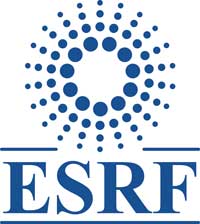
Scientists at ESRF have developed a technique that may revolutionise chemical analysis of rare materials such as meteoric rock samples and fossils. Normally, X-rays are sensitive to the shape and texture inside a given sample but cannot reveal chemical states. The new technique produces X-ray images of the chemical bond distribution for key elements embedded deep in opaque materials, which was thought to be impossible without destroying the sample. “I would love to try this on Martian or Moon rocks. We can see not only which elements are present in any inclusion but also if there is oxygen, whether it belongs to a water molecule or not,” says Simo Huotari, from Helsinki, Finland, who developed the technique.

difficult to analyse if they are
embedded inside other
materials. A new synchrotron
X-ray technique can not only
detect them, but even
distinguish their
chemical bonds
Image courtesy of Tuomas
Pylkkänen (University
of Helsinki)
To learn more, see the news item (‘New synchrotron technique could see hidden building blocks of life’) on the ESRF website (www.esrf.eu) or via the direct link: http://tinyurl.com/69o9g7g
See also the research paper:
Huotari S et al. (2011) Direct tomography with chemical-bond contrast. Nature Materials 10: 489–493. doi: 10.1038/nmat3031
Situated in Grenoble, France, ESRF operates the most powerful synchrotron radiation source in Europe. To learn more, see: www.esrf.eu
European XFEL: The light at the end of the tunnel

European XFEL is a research facility currently under construction in the Hamburg area, Germany. It will generate extremely intense X-ray flashes for use by researchers from all over the world. To learn more, see: www.xfel.eu
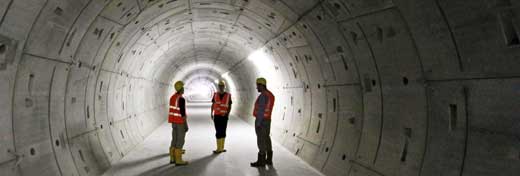
Image courtesy of European XFEL
ILL: Slow cholesterol
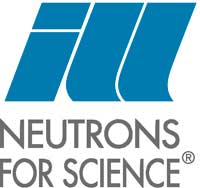
Scientists using neutron scattering at the Institut Laue-Langevin (ILL) and at the NIST Center for Neutron Research in Gaithersburg, MS, USA, have found that the time cholesterol takes to move within and between cells is in the order of several hours, far slower than previously thought.
Cholesterol forms part of the outer membrane that surrounds every cell. It plays a vital role, enabling the transmission of chemical and nerve signals around the body: it is the basis of important hormones and provides insulation for nerve fibres. Maintaining the correct levels of cholesterol through redistribution between and within the cells is therefore very important. Abnormalities in cholesterol transport have been implicated in diseases such as Alzheimer’s, atherosclerosis and various cardiovascular disorders. Investigating the precise rate of cholesterol transport could therefore help in developing new, improved treatments for these disorders.
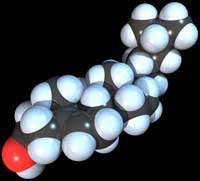
cholesterol molecule
Image courtesy of RedAndr;
image source: Wikimedia
Commons
For more information, see the research paper:
Garg A et al. (2011) Noninvasive neutron scattering measurements reveal slower cholesterol transport in model lipid membranes. Biophysical Journal 101(2): 370-377. doi: 10.1016/j.bpj.2011.06.014
ILL is an international research centre at the leading edge of neutron science and technology, based in Grenoble, France. To learn more, see: www.ill.eu






